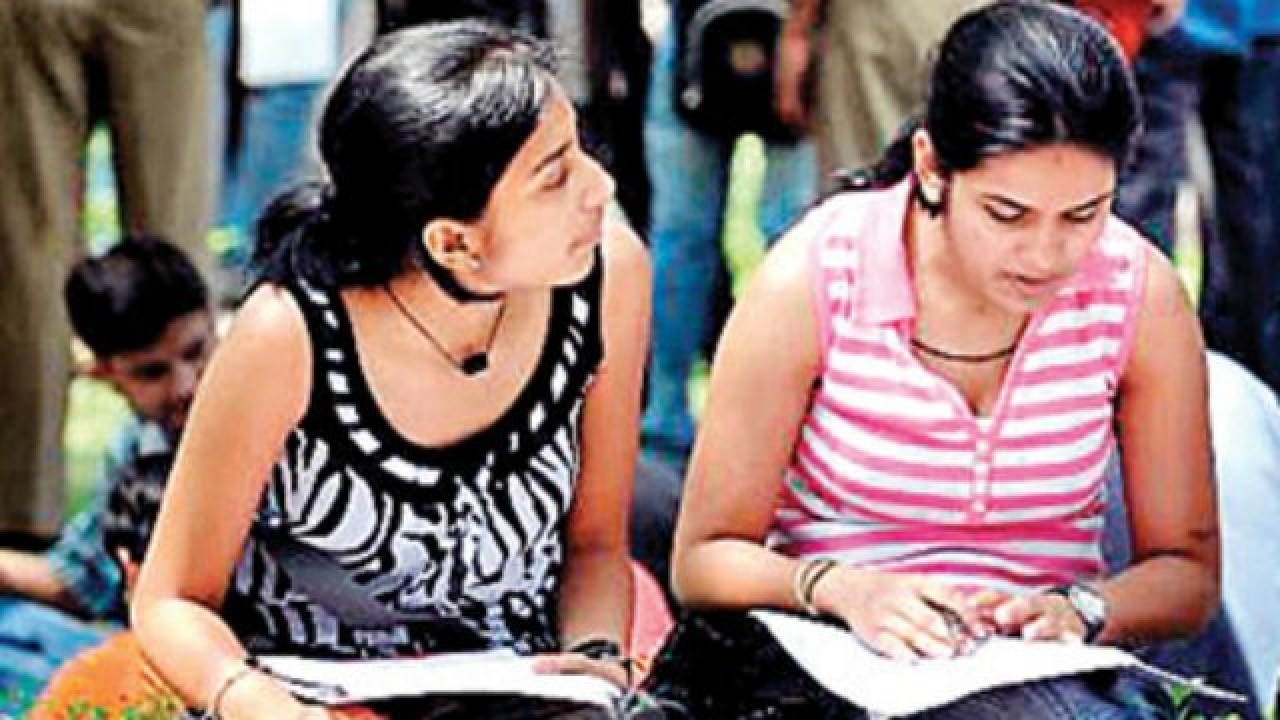
Political Science is about cooking and the most reactive element in the periodic table is "aluminium". Incredible? Perhaps not, if you have heard about the Class 12 toppers from Bihar. Videos of shocking gaffes by Humanities topper, Ruby Rai, and Science topper, Saurabh Shrestha, are going viral on the Internet.
Those familiar with the state of school education in Bihar are not surprised. About a year ago, a photograph capturing relatives of candidates appearing for an examination scaling a school building to help them cheat in Bihar's Vaishali district focused international attention on the visually hilarious but sad drama.
Strict rules to assure merit
After Bihar brought in stringent checks at examination centres this year, only half the students appearing for Class 10 examination could pass. "The results are not as expected. But they show the actual merit of students. Those who have passed will be able to clear competitive exams," state education minister Ashok Choudhary told reporters.
The challenges of studying in a government-aided school, however, has often been overcome by personal endeavour. Krishna Veda Vysa, the son of a truck driver, who took to selling newspapers to pay school fees. A class topper, lack of finances forced him to drop out from school. Today, he is an IIM-Calcutta graduate.
His case is one of triumph over a systemic, deep-rooted malaise which has crippled the education system in India.
India's investment in education
India spends Rs 54,893 crore or US $8,210 million on education every year with 7,40,000 schools, making it one of the world's largest.
In last year's budget, Finance Minister Arun Jaitley reduced overall allocations in education but increased higher education budget by nearly 22 per cent, which meant a shift in focus away from school. In 2015-16, about Rs69,074 crore was allocated for education -- out of which Rs 42,219 crore was for school sector and Rs26,855 crore for higher education -- as against Rs70,505 crore in 2014-15.
Yet the state of education in government-run institutions is so abysmal that one would have trouble finding a person of means, including the Minister of Education, who would send their kids to a government school. Any person who pays for this system to run will never use it for himself or for his family.
Imparting poor education a pan-India problem
Standards of learning are low across India. A survey by non-government organisation Pratham says educational standards of students in English and Mathematics have fallen in the past eight years, up to the upper primary level in government-run schools. Low quality teaching is a major reason for this.
Pratham's Annual Status of Education Report (ASER) 2014 -- studying learning outcomes among children – found 26.1 per cent of class V students could solve simple math and half the class could not read class II level texts.
As far as global standards are concerned, a look at 2009 Programme for International Student Assessment (PISA) survey helps. It had placed India in the second last position, just ahead of Kyrgyzstan, in a survey of children in 74 countries on their reading, math and science abilities. India has refused to participate in the survey since then.
Comparative global educational models
India has the third-largest education system after China and United States, but fails to make the cut when it comes to exposure, industry-relevant exercises and innovative teaching techniques.
Countries like the United States and Germany focus on curriculum-based teaching when it comes to business. Academics interact with corporate companies and look at what the future trend will be, paying adequate attention to economic charts and train students accordingly.
Recently, there has been a debate on the Finnish education model where researchers claim that there has been exemplary progress. The 'No homework, no stress' policy, extended recess and late age of joining elementary school are the advantages cited in the model, giving children space and time to learn.
India, on the other hand is known for mindless learning by rote and over emphasis on marks rather than practical-based learning or skill training.
Rote learning vs skill development
A good score is important for admissions at the college level to earn an undergraduate degree – often the basic requirement for an office job. Students who have no interest in academic pursuits have to put up with years of rote learning to get over these traditional thresholds to employment. When that fails, organised rackets step in to help them.
The Indian government is now looking at skill development as a way out for those who are not academically inclined to make them employable.
According to the Indian government, 1.04 crore youth have been trained under Skill India Mission in 2015-16. This is an improvement of 36.8 per cent from the previous year's recorded data.
The Skill India Mission is aimed at providing technical training to students to do away with the almost unavoidable nature of a university degree in the current education-employability paradigm. The government plans to train manpower and send them abroad for work to encourage skill training and is adding 5,000 new Industrial Training Institutes (ITIs) to the existing pool of over 13,000.
Given that 41 per cent of India's population is under 19 as per the 2011 census and the demand for jobs is on the rise every year, this may be the only way out.
Are we prepared to learn our lessons?
The Bihar 'prodigal' incident is a wake-up call which has once again exposed the inadequacy of our education system where the marksheet wins over actual learning. India can learn from education systems around the world -- especially from models which emphasise skill learning so as to keep up with the growing demand globally as well as in the domestic sector. It will take a combination of training, efficient management and adequate funds to root out the malaise within the country's public education system.